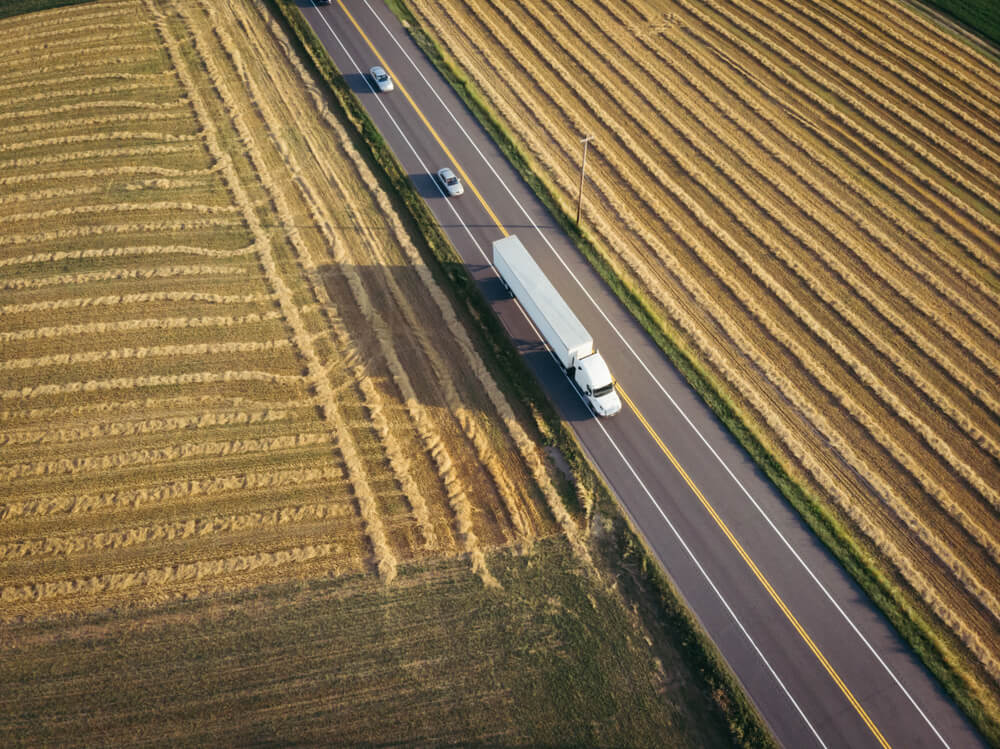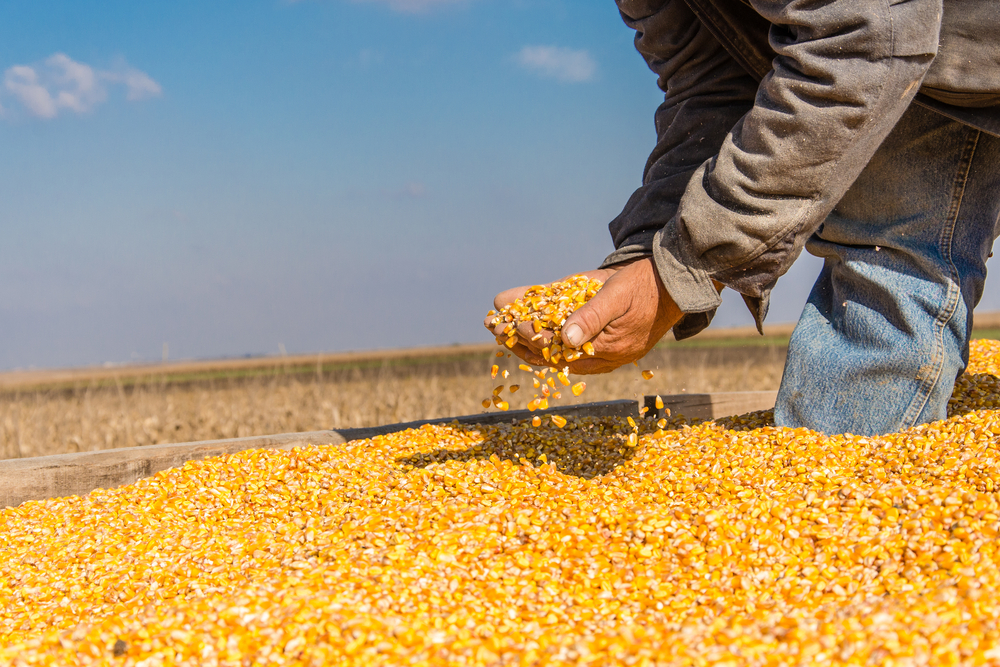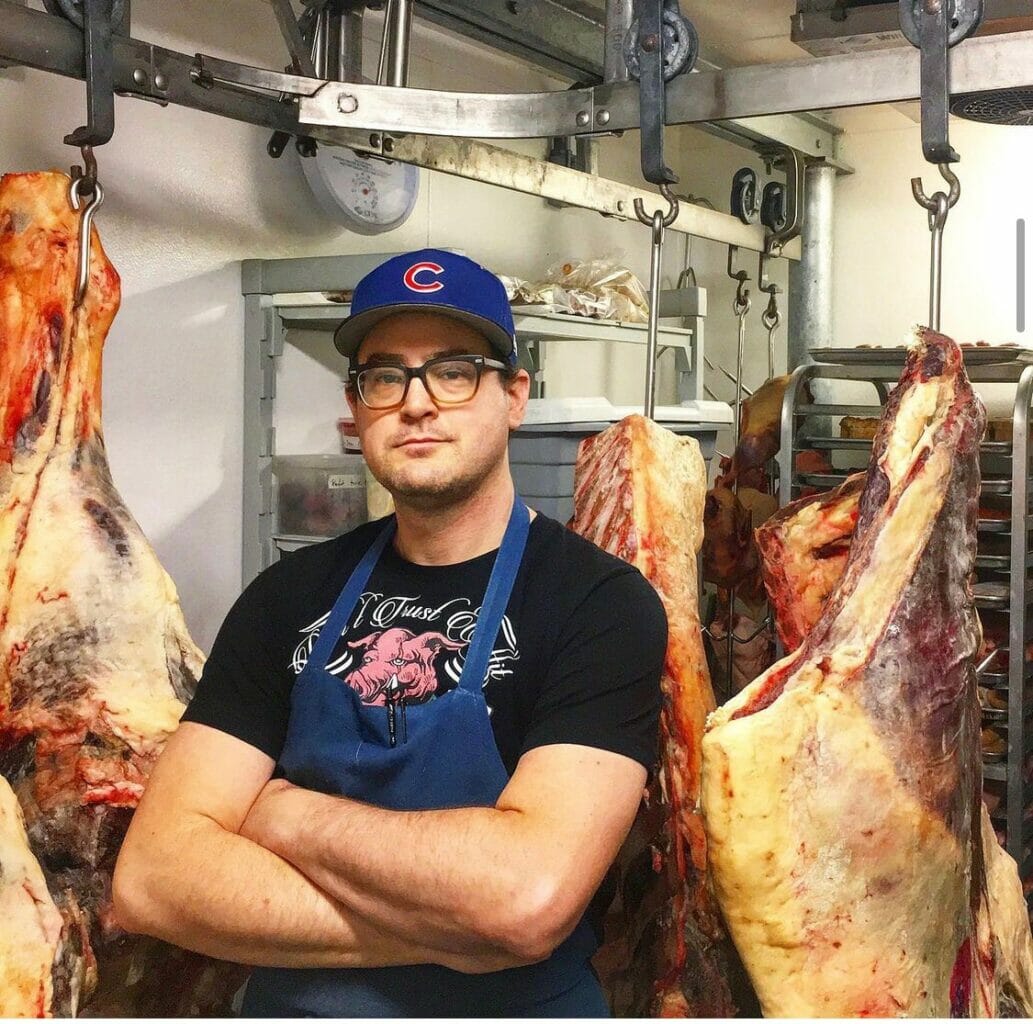Producers are over-ordering supplies for 2022, farmers are considering new cash crops, while others are getting out of the business.

First, there were delayed shipments from overseas. Then, ships stuck at port and truck drivers unable to load up deliveries. More recently, a pricier Thanksgiving turkey—if you were able to find one in the first place.
Supply chain disruptions steadily increased this year and with each new hiccup, a new sector of food production or distribution has been impacted. Though each of these supply issues happens on their own scale, it’s clear they’re connected. That cargo ship stuck off the coast of Los Angeles is part of the reason your peanut butter is more expensive. Pull on a single loose thread and you can unravel the whole supply system.
COVID-19 has also changed the way we shop. With online ordering a primary option for many people, this puts stress on transportation channels even more. As we head into our second COVID winter, demand for products hasn’t gone down and experts agree that supply chain issues will continue for the foreseeable future.
Here are some of the areas that have broken down, but how producers are trying to deal with the fallout.
Transportation is Scarce
Generally speaking, we have enough food. Farmers and producers around the country are growing enough grain, harvesting enough almonds and butchering enough hogs to meet demand. It’s not a matter of having the goods. It’s about getting products from farms to your table.
United Grain Corporation, based in Washington State, works with thousands of farmers in Washington, Oregon, Montana and the Dakotas, moving thousands of bushels of grain from field to storage to shipping container every day. The grain distributor focuses on cash crops such as wheat varieties, along with soybeans and barley, meeting the strong demand for those products in Asian markets. CEO Augusto Bassanini says United Grain has been able to weather the transportation crunch pretty well, but only because they’ve spent the last decade shoring up their own dedicated pipeline. In many areas, that means learning how to be as efficient as possible. “Bigger planters, bigger combines. For the most part, farmers own their own truck fleet, so they have not had to depend on a trucking company to move their product,” Bassanini explains.
For some farmers, an all-in-one system like that might work well. If you harvest your own wheat and truck it yourself to a local grain elevator, you’ve cut out the middleman and saved a transportation headache. But ports and shipping freights are often at the mercy of good weather and there’s only so much a single producer can control. If one part of the supply chain slips, it has ripple effects down the line.

Photo by Tanja Tatic, Shutterstock.
Take corn, for example. Like many farmers right now, corn producers are grappling with fertilizer shortages, which has made the price of available products skyrocket. This comes in the wake of tariffs on some imported fertilizers, which the National Corn Growers Association (NCGA) is fighting with in an amicus brief, currently in front of the US Court of International Trade. While that fight plays out in the courtroom, the reality on the field is that some fertilizers are double the cost of what they were just one year ago. Others, like nitrogen-based fertilizers, can be more than three times the cost. If farmers aren’t able to get fertilizer, or aren’t able to get enough of it, that can have a huge impact for a product like corn.
“It can be in bio-plastics, it can be in different feed products. It can be in things that you might see in the pharmaceutical industry, or your chewing gum,” says Chris Edgington, president of the NCGA board of directors.
Corn and its components—starch, fiber, protein and oil—are used in all kinds of products, most importantly in animal feed. According to Edgington, about 25 percent of American corn is exported to more than 100 countries to be used as feed. If the corn can’t get shipped out, that means next year’s feed supply is in question. And that means next year’s meat supply is also up in the air.
Producers Are Getting Priced Out
For now, most American producers have enough corn, even if they can’t always get it where it needs to be. But that might not be the case next year, as growers are grappling with whether or not to stick with the crop as costs of production surge.
“That’s causing some real serious discussions around crop mixes,” Edgington says. “A grower that I spoke with…he booked his [fertilizer] to put on this fall for $800 a ton. Today, it’s $1,600 a ton. That’s in about two months time. So, some people are saying ‘I’m not doing it.’”
Corn growers might otherwise look to soybeans, oats, cotton, peanuts or rice—any other cash crop that might provide more bang for their buck. For growers that Edgington knows, it has come down to one question: “What are you willing to pay?”
It’s a question customers are asking at the grocery store, too, as labor shortages across the food chain have squeezed available goods. The average cost of Thanksgiving turkeys this year was about 24 percent more than in 2020. That price increase has extended to other cuts of meat, even ones that you might not expect, like brisket or bottom round roasts. “Brisket is a great example. Around the holidays, we sell a lot of brisket. But the rest of the year, brisket is primarily sold to people who are barbecuing, and they don’t expect them to be expensive,” says Rob Levitt, butcher and chef de cuisine at Publican Quality Meats in Chicago. “Now that there are all these labor shortages, everywhere from slaughterhouses to packing houses to truck drivers, you’re seeing the price of these things go up.”

Rob Levitt. Photo courtesy of Publican Quality Meats.
Levitt worked around the Thanksgiving supply issues by securing his turkey order back in July. He also buys directly from the producer, building a relationship that’s helped him pivot if supplies ever dip. “I’m gonna do whatever I can to help him get through products that he’s sitting on and he’s gonna do whatever he can to make sure that I don’t get shorted on things that I need, things that my customers want. He’s gonna keep prices fair,” Levitt says, acknowledging that many customers might not have access to the same butchers or producers that he does. And in that case, they’re probably readjusting their budgets this holiday season.
Packing it Up
One of the biggest issues this fall hasn’t been transportation or supply, but rather, packaging materials. Plastic clamshells for berries, bags for nuts, baling twine, cardboard boxes and polymer resins are all in short supply. As a result, many farmers who have a farm stand or country store where they sell value-added products have run into issues getting goods out the door.
At a recent roundtable of the North American Farmers’ Direct Marketing Association, Kim Sisco of White House Fruit Farm in Canfield, Ohio talked about having to switch up many of the value-added products she offers at her farm store. “One of the things we’re known for is our doughnuts and we have an embossed box that we use,” Sisco says.
When that box was unavailable, the farm had to search for a new supplier and they couldn’t find packaging that was the same size. “It made a very poor showing of our product…It was just big enough that it made us look like we had shrunk our product,” Sisco says, adding she ran into problems getting nearly every container they needed. “We had trouble getting labels and so we couldn’t produce things because we’d have to label them. We had trouble getting glass, trouble getting canning jars, canning lids, all of those things.”
One way around the issue is to over-order supplies, which has worked for Sisco. When she’s found a material that works, she’s bought as much as she can store. “The canning jars, when we were able to get them, we took absolutely the limit that we could take,” she says.
For larger operations, though, many have had to put in advanced orders, planning years in advance. That’s an especially risky proposition, as future planning is tough at the best of times. But during the COVID-19 pandemic, with physical distancing requirements and restaurant bylaws in flux, it’s even harder to predict what next week will hold, let alone next month. But what else can be done?
At Castle & Key Distillery in Frankfort, Kentucky, Jessica Peterson, the director of operations, knows how many bottles of bourbon she’ll be producing for the next two years. She has to. Preordering glass bottles is the new reality for many distilleries, after glass went into short supply earlier this year.
As a newer distillery, Castle & Key spent more than a year designing a custom mold for their glass bottles and found a production source in the UK. But when that source experienced a COVID-19 outbreak and had to shut down, Peterson scrambled. At first, she was able to get a single shipment from the original plant in the UK, but they had to fly it over, rather than have it come by cargo ship. Though the bottles did arrive, it cost four times more than expected.
Now, the distillery is working with a new supplier in Mexico, making it possible to use rail freight, keeping their costs low. Even so, they’re still putting in orders years in advance. “Traditionally, we’re placing glass orders anywhere for six months to a year in advance,” Peterson says. “We’ve already submitted our orders for 2023.”
It’s a reality of a limited supply, but it’s also an insurance policy of sorts. Peterson says she’s trying to avoid getting caught without supplies like they did at the start of the pandemic. “We were only focused on a single vendor network. We just had one supplier for each element there,” she says. “And now we’re just looking at expanding that, and seeing just how we can provide that security blanket for ourselves.”
Now that they have the bottles, the next hurdle is getting paper for the labels. The ordering timeline for labels has stretched from about a week to more than eight weeks. “It’s been an interesting time,” Peterson says. “But it’s also really nice that the folks that we work with are very transparent.” For already stretched-thin suppliers, that’s as much as you can ask for.